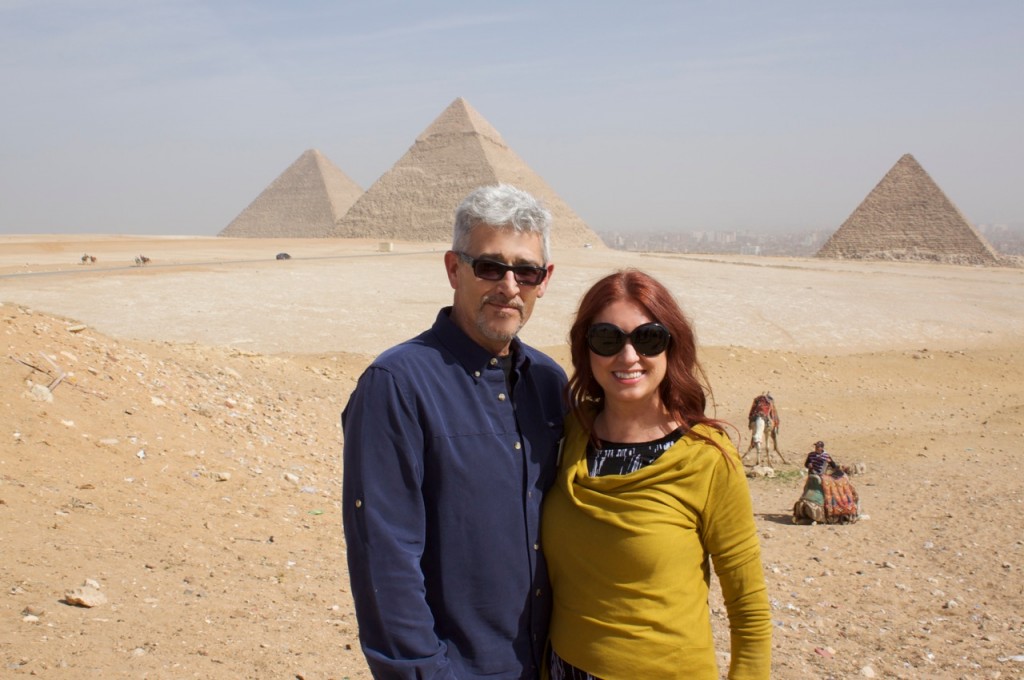My Heart Belongs to Egypt
04.05.12 · Sonia Greteman

Since my first art history class more than 30 years ago, I’ve had a love affair with Egypt. The art, architecture, gods, creativity and adornment captured my imagination. Now I wouldn’t go as far as to say I’m Queen Nefertiti reincarnated – like our National Geographic guide says many visitors do – but I do have an awe-inspired connection to this one-of-a-kind culture.
After planning the trip three times, finally this year it happened. Various friends thought we were crazy to go. Last year we were walking out the door on the way to the airport when National Geographic called to cancel the trip for the first time in its history. The government had taken down the Internet and Tahrir Square was in the middle of a full-blown uprising.
After the Uprising
Now one year later, the country is in a state of flux, its future uncertain. Tourists are keeping their distance, fearful it’s not a safe travel destination. It is. We witnessed a country hungry for tourism dollars and a people ready to build a democracy. If media hype causes us to avoid Egypt, we rob its people of their livelihood while cheating ourselves out of seeing some of the world’s most impressive wonders.
So my advice is, go to Egypt. Now. It is a fascinating time to visit. You not only have a firsthand, front-row seat to every major attraction, but a glimpse into a country on the verge of change. We toured The Temple of Karnak at Luxor, and in place of its usual 300 tour buses, there were a lonely three. This translates into no lines, and plenty of time to investigate, explore and absorb.
Traveling the fertile Nile valley or exploring the temples and tombs, my husband, a sculptor, marveled at the miles and miles of granite sculpture, the mind-blowing scale, the beauty of detail and the pure ambition of the works. Being a graphic designer, I soaked in the elegance of the color palettes relying on the hues of natural stones including blue lapis, red coral and turquoise. The plaster fresco paintings, sophisticated beyond imagination, revealed elaborate subjects and creative stories representing the origins of the gods.
The Road Less Traveled
If you like lying on the beach and sipping margaritas, this trip is not for you. But if you like to get outside your comfort zone and drink in a truly foreign culture, consider it. The sounds, sights and smells of the street include the Muslim Call to Prayer five times a day, echoing the melodic Arabic language throughout the city, the colorful and severe Hajjibs and Abayss (headscarves and long dresses) and delicious and plentiful vegetarian selections of falafel and Baba Ghanouj. We’ve never eaten so well.
One morning we were blessed to have a young revolutionary talk to us. She spoke passionately about the organizing force behind the revolution – the Facebook campaign that rallied people to Tahrir Square. She explained the mood as electric with middle-class families and friends singing, eating, hugging, camping, cajoling and joining together with a common goal: to create a united front for transformation, desperately needed and within reach. She proudly, tearfully stated that she had recently voted for the first time in her life.
A Warm Welcome
We felt appreciation from the Egyptian people everywhere we traveled, from the city of Cairo to the village of Abu Simbel. They were quick to thank us for visiting and believing in them. They asked that we be ambassadors and tell the world to please come back to Egypt.
As members of an increasing interconnected world, we need the understanding only travel provides. Go where your heart leads you. I’m hoping it’s to Egypt.

